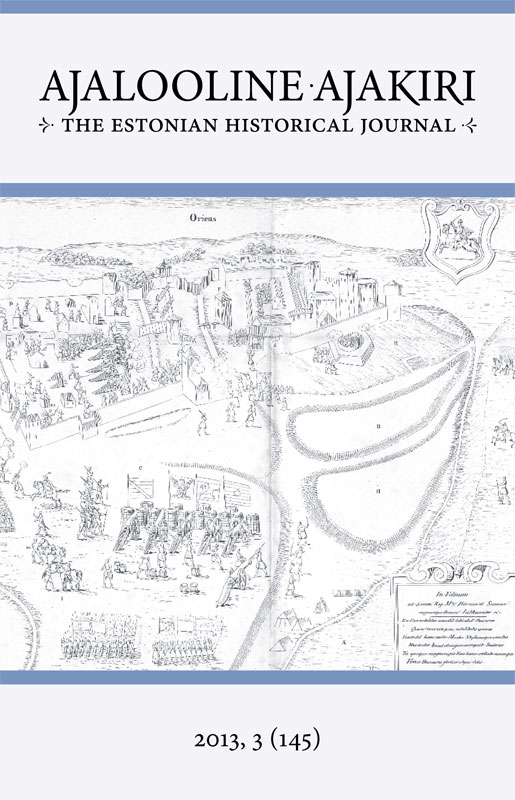Gootitsismist Balti varauusaegses ajalookirjutuses
DOI:
https://doi.org/10.12697/AA.2013.3.02Abstract
Gothicism in early modern Baltic historiography The purpose of this article is to describe and analyze the seventeenth-century view of early medieval history. It is based on four Baltic chronicles: those of Moritz Brandis, Thomas Hiärn, Gustav von Lode and David Werner, and Christian Kelch. In addition, a sixteenth-century chronicle by Johann Renner was added as an independent text, since it was unknown to the four chroniclers mentioned above. The subject has found little attention in Baltic German and contemporary Estonian historiography, but could be studied as an interesting phenomenon in early modern historiography in the context of developments in Europe at the same time. The first part of the article gives examples of the origin myths of England and France and proceeds to give a short overview of the history of the Gothicism in Swedish historiography. The second part summarizes the description of early medieval history of the chronicles, compares the texts, and searches for the sources and motives of the chroniclers. The chronicles describe centuries full of military campaigns between Scandinavian and Baltic tribes and their rulers. It seems that Moritz Brandis was the base text for the later chroniclers, though his text was not copied word-for-word. The chronicles of Lode-Werner and Kelch followed Brandis’s text more closely than Hiärn. Brandis and Hiärn had lengthier and more detailed descriptions of events, while the texts of Lode-Werner and especially Kelch were shorter and much less detailed. However, they both added events or episodes (from their sources) that are not included in the chronicles of Brandis and Hiärn. All four storylines follow a similar path, but each has slight differences. However, it was not Moritz Brandis who created (as in made up) the early modern view of the Baltic early medieval past, partly because at the end of the sixteenth century Johann Renner also constructed a similar view of early medieval history. Brandis was the base text, but Hiärn probably wrote quite an independent narrative based on Brandis’s sources. The practice of writing mythical or legendary history for European nations was quite common in the early modern period and had its roots in both politics and the lack of criticism toward ancient and medieval sources. The high tide of Gothicism in the kingdom of Sweden coincided with the Swedish rule in Estland and later Livland. The political aspects are also important in the Baltic context but should not be overemphasized. Although Gothic historiography was more widespread in the province of Estland, which had been under Swedish rule longer than the province of Livland, and at the Swedish university of Tartu, both competing Danish and Swedish sources were used. It seems more likely that the chroniclers wanted to go back as far as their sources allowed, which is why they included the Goths, Swedes, and Danes. The chroniclers did not create the past; they compiled it from their sources, which were both popular and authoritative at the time, such as the medieval chronicle of Saxo Grammaticus and the work of Johannes Magnus. The Baltic chroniclers were interested in sources that described the events concerning the Baltic area, and they left out events they considered supernatural or otherwise unimportant. They did not invent events or mythical ruler dynasties for the local tribes, although one or two local rulers were mentioned. If anything, they were rather unimaginative, and Thomas Hiärn and Lode-Werner were outright skeptical of the mythical early medieval past. Keywords: Gothicism, chronicle, historiography, early modern, Estonia, Livonia. Janet Laidla (b. 1982), is a Lecturer of Estonian history at the Institute of History and Archaeology, University of Tartu. Correspondence: Institute of History and Archaeology, University of Tartu, Ülikooli 18, 50090 Tartu, Estonia. E-mail: Janet.Laidla@ut.eeDownloads
Download data is not yet available.

